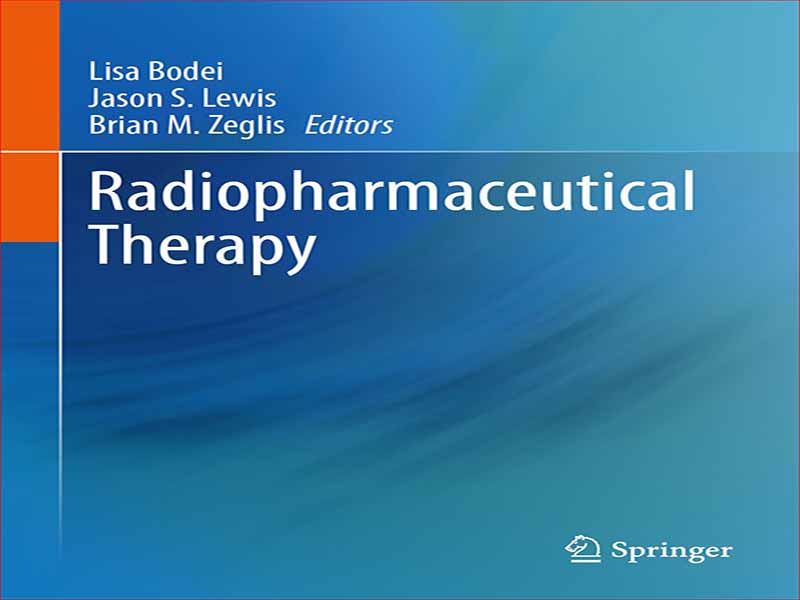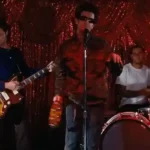- عنوان کتاب: Radiopharmaceutical Therapy
- نویسنده: Lisa Bodei
- حوزه: رادیودارو
- سال انتشار: 2023
- تعداد صفحه: 561
- زبان اصلی: انگلیسی
- نوع فایل: pdf
- حجم فایل: 28.6 مگابایت
رادیودارو درمانی (RPT) جدید نیست: بیش از 80 سال است که از زمانی که دکتر سائول هرتز برای اولین بار تلاش کرد بیماران مبتلا به سرطان تیروئید را با ید رادیواکتیو درمان کند، استفاده شده است. در سال 1946 از دکتر هرتز نقل شده است که “…تقاضا در زمینه سرطان و لوسمی برای سایر داروهای رادیواکتیو مورد انتظار است.” حق با او بود، اما کمی طول کشید. از آن زمان، RPT از طرد، بی تفاوتی، فراموشی، صعود و در نهایت پذیرش عبور کرده است. دهه گذشته شاهد افزایش قابل توجهی در رشته RPT بوده است، با اکتشافات پیشرو در علوم پایه، ترجمه بالینی مجموعه ای در حال گسترش از عوامل جدید، و تایید نظارتی رو به افزایش رادیوتراپی های جدید. با در نظر گرفتن این ظهور، ما احساس کردیم اکنون زمان ایجاد یک کتاب درسی است که می تواند هم منبع آموزشی و هم به عنوان یک مرجع اولیه برای علاقه مندان به RPT و کاربردهای آن باشد. سر وینستون چرچیل – که به عنوان نویسنده مهتابی شد و در سال 1953 جایزه نوبل ادبیات را دریافت کرد – نوشت: «نوشتن کتاب یک ماجراجویی است. برای شروع، این یک اسباب بازی و یک سرگرمی است. سپس تبدیل به معشوقه می شود. سپس استاد می شود. سپس تبدیل به یک ظالم می شود. مرحله آخر این است که درست زمانی که می خواهید با بندگی خود آشتی کنید، هیولا را بکشید و او را به عموم پرتاب کنید. این نقل قول تقریباً تجربه ما را تقریب میکند (اگرچه شاید درام کمتری داشتهایم)، و بهمنظور افشای کامل، این پیشگفتار را زمانی بین دو فاز «ظالم» و «کشتن هیولا» مینویسیم. این کتاب به سه بخش کلی تقسیم شده است: مبانی، غواصی عمیق و موضوعات ویژه. در بخش اول، چندین موضوع اساسی در این زمینه، مانند تاریخچه RPT، رادیوبیولوژی زیربنای این رشته، و شیمی رادیودارویی رادیونوکلئیدهای درمانی را پوشش میدهیم. در بخش دوم، نگاهی عمیق تر به پرتودرمانی های خاص می اندازیم. در اینجا، ما از یک رویکرد دو لایه استفاده کردهایم، با هر دو فصل وسیعتر که داربستهای مختلف را برای عوامل (یعنی آنتیبادیها، پپتیدها و مولکولهای کوچک) و همچنین فصلهای «مطالعه موردی» متمرکزتر در مورد پرتودرمانیهای فردی را پوشش میدهد. در بخش پایانی، تعدادی از حوزههایی را پوشش میدهیم که مهم هستند، اما در هیچ یک از دو بخش قبلی مناسب نیستند، از جمله پتانسیل درمانی رادیونوکلئیدهایی که الکترونهای اوگر ساطع میکنند، وعده رادیوایمونوتراپی از پیش هدفگذاری شده، تصویربرداری ترانوستیک در زمینه RPT، و فرآیند بررسی نظارتی برای پرتودرمانی در نهایت، ما معتقدیم که این کتاب درسی هم دانشمندان و هم پزشکان را با درک این رشته به سرعت در حال رشد آشنا خواهد کرد. ما در ادامه به عنوان مقدمهای مهم برای کسانی که میخواهند خدمت کنیم ما سه نفر کار خود را وقف رادیوشیمی و پزشکی هسته ای کرده ایم. این کتاب تجلی تمایل ما برای رشد رشته ای است که دوست داریم. این کار بدون کمک های فوق العاده دوستان و همکاران عزیزمان که این عرصه را به آنچه امروز هست میسر نمی کنند. تلاش و کار آنها (مخصوصاً پس از چند نق زدن جدی از طرف ما) بسیار قابل تقدیر است. ما همچنین میخواهیم از سردبیران Springer Nature بهخاطر سختکوشی و صبرشان قدردانی کنیم. در نهایت، دوستان، خانوادهها و همکاران ما به خاطر حمایتشان در طول این فرآیند شایسته تشکر هستند: ضربالمثل آفریقایی “برای بزرگ کردن یک کودک یک دهکده لازم است” توصیف مناسبی برای خلق کتابی مانند این است – از تصور تا تحقق.
Radiopharmaceutical therapy (RPT) is not new: it has been deployed for over 80 years, ever since Dr. Saul Hertz first attempted to treat thyroid cancer patients with radioiodine. In 1946, Dr. Hertz was quoted as saying “…demand is expected in the fields of cancer and leukemia for other radio-active medicines.” He was right, but it took a while. Since then, RPT has traversed rejection, indifference, oblivion, ascendance, and finally, acceptance.
The last decade has played witness to a remarkable surge in the discipline of RPT, with trailblazing explorations into basic science, the clinical transla-tion of an expanding array of new agents, and the ever-quickening regulatory approval of novel radiotherapeutics. With this advent in mind, we felt now was the moment to create a textbook that could become both a teaching resource as well as a primary reference for those interested in RPT and its applications. Sir Winston Churchill—who moonlighted as an author and was awarded the 1953 Nobel Prize in Literature—wrote, “Writing a book is an adventure. To begin with, it is a toy and an amusement. Then it becomes a mistress; then it becomes a master; then it becomes a tyrant. The last phase is that just as you are about to be reconciled to your servitude, you kill the monster and fling him to the public.” This quote roughly approximates our experience (though perhaps we’ve had a bit less drama), and, in the interest of full disclosure, we are writing this preface sometime between the “tyrant” and “killing the monster” phases.
The book is divided into three overarching sections: Fundamentals, Deeper Dives, and Special Topics. In the first section, we cover several foundational issues in the field, such as the history of RPT, the radiobiology underpinning the discipline, and the radiopharmaceutical chemistry of therapeutic radionuclides. In the second section, we take a more in-depth look at specific radiotherapeutics. Here, we have used a two-tiered approach, with both broader chapters that cover different scaffolds for agents (i.e., antibodies, peptides, and small molecules) as well as more focused “Case Study” chapters on individual radiotherapeutics. In the final section, we cover a number of areas that are important but do not necessary fit in either of the two previous sections, including the therapeutic potential of radionuclides that emit Auger electrons, the promise of pretargeted radioimmunotherapy, theranostic imag-ing in the context of RPT, and the regulatory review process for radiotherapeutics. Ultimately, we believe that this textbook will provide both scientists and physicians with a comprehens tion to this rapidly growing discipline. We furth serve as a critical introduction for those wanting t
The three of us have dedicated our careers to radiochemistry and nuclear medicine; this book is the manifestation of our desire to grow the field we love. This work would not have been possible without extraordinary contributions from our dear friends and colleagues who make this field what it is today. Their efforts and work (especially after some serious nagging on our part) are very much appreciated. We would also like to recognize the editors at Springer Nature for their hard work and patience. Finally, our friends, families, and colleagues deserve thanks for their support during this process: the African proverb “it takes a village to raise a child” is an apt description for creating a book like this—from conception to realization.
این کتاب را میتوانید از لینک زیر بصورت رایگان دانلود کنید:
Download: Radiopharmaceutical Therapy




































نظرات کاربران